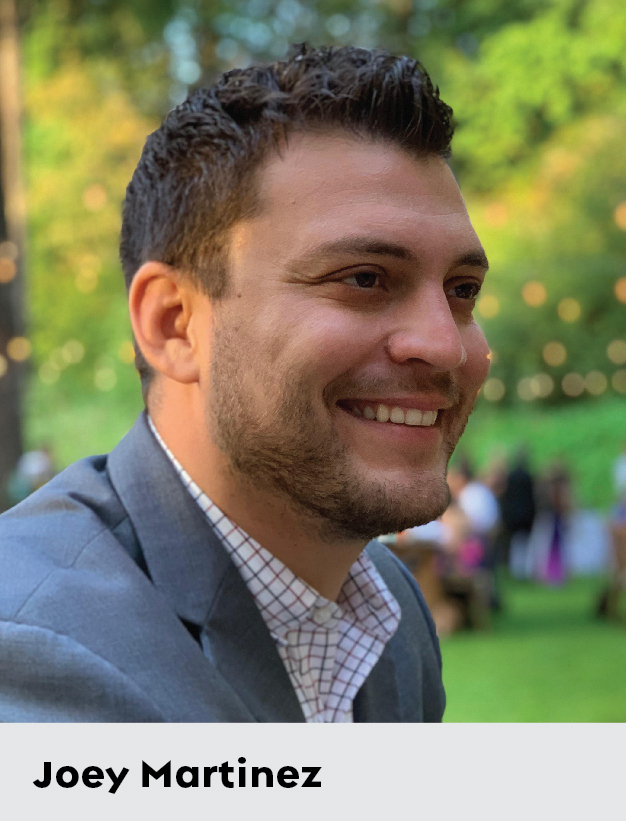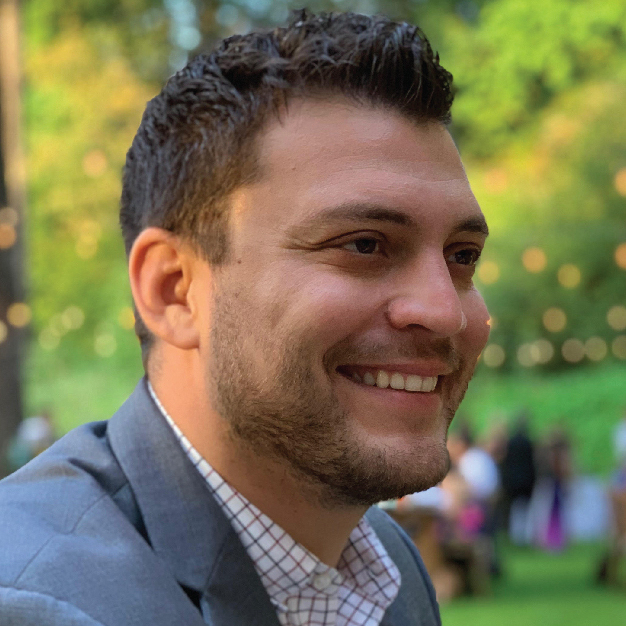How Tanium Is Building the Future of Work
Joey Martinez, who oversees Tanium’s workplace design, explains the company’s new hybrid office model, which includes desk-booking, wellness rooms, and “coding caves.”
If you’re reading this, you’re a pandemic veteran. A year ago, you went full survivor, grabbed everything you could from the office, set up a makeshift workspace at home, started remote-schooling your kids, grew a pandemic beard, and maybe dug a victory garden for the long haul.

Today, you’re increasingly free of mask mandates (if not the beard) and wondering: Should I go back to the office? Can I go back? Do I want to go back? There’s no Magic 8 Ball for that answer.
As employers consider how best to usher workers back into shared offices—while maximizing safety, minimizing stress, and keeping the good ship productivity on an even keel—it’s become clear this isn’t just an exercise in getting things back to normal. It requires an entire rethink.
Tanium’s Cyber Hygiene Assessment: An actionable path to better endpoint management and security
For one thing, the pandemic is still with us. We’ll be living with it for some time to come. From global manufacturers to regional drugstore chains, too many lessons have been learned to just shut the door on the innovation and productivity—not to mention the quality of life—that can be achieved from remote working.
For those of us who have been trying to figure out what the future of work will look like, it means lots of planning: designing desk-booking apps, consulting with the people who will be using our offices, being sensitive to health anxieties, and devising things like “coding caves.”
A blank sheet of paper
When Goldman Sachs CEO David Solomon said earlier this year that working from home was an “aberration” and his company would be coming back to the office in full force, it seemed at odds with how most of us were thinking of work. And when the Harvard Business Review recently ran the headline “Don’t Let Employees Pick Their WFH Days,” that too seemed out of sync for us.
[Read also: CEOs at the crossroads]
Our approach at Tanium is different. We came to it by putting together a task force last June. That’s right—just a few months into the massive national shift to remote work.
We brought together people from a wide range of teams and disciplines, including facilities management and security, finance, legal, talent acquisition, employee engagement, benefits, sales and, of course, IT. In addition to canvassing the needs and goals of our 1,700 employees (a family of workers that has grown significantly during the pandemic), we considered the unique aspects of Tanium itself. For example, even before the pandemic, our workforce was 50% remote. They had already demonstrated a keen flexibility, self-reliance, and high rates of productivity.
The task force’s conclusion: The best way forward would be to ensure maximum flexibility in employee working arrangements while also providing transparency and emotional support.
In short, we told everyone: You never have to come back to the office. We also said: If you do want to come back, we’re here for you and ready to accommodate your needs. We see this as a pledge to double down on work-life balance. We all know how to use video and other online collaboration tools. It’s part of our DNA. We all know how to stay connected—and disconnect. It’s our job, and we do it very well.
A new office
In addition, our new office in Kirkland, Wash., which we will open for the first time in mid-July, has given us an incredible opportunity to rethink our shared physical spaces. Our employees have told us they expect to come in once or twice a week, maybe for a co-worker lunch or for meetings. So instead of creating a multifloor campus, we’re targeting a long-term, smaller footprint of something around 25,000 square feet on a single floor.
In it, we’ll emphasize collaboration areas, including so-called touchdown spaces—similar to work areas you find at airports—to plug in a laptop and maybe have a snack.
If you need more personal space, and maybe want to get out of the house for an entire day, you’ll be able to book specific desks, either apart from or adjacent to other team members. We’re also creating quiet areas, or “libraries,” for downtime. For when you need a break but maybe don’t want to go home just yet. For our engineers, who are the backbone of Tanium’s products and services, we’ve created special coding caves. We have small spaces with just one desk, and more communal caves with a handful of them, where you can work collaboratively.
Cyber hygiene in a fluid environment
One of the biggest challenges of remote work during the pandemic, for enterprises large and small, was securing the myriad endpoints—laptops, tablets, PCs, etc.—that workers use daily to connect to the corporate network, sometimes using unsecured home WiFi routers.
Managing and securing endpoints is what we do at Tanium. It’s our whole reason for being. Our basic advice to customers is to inventory those scattered assets, configure them properly, monitor, manage, and update them, and set up proactive incident response plans.
[Read also: Tanium employees make an impact with Impact]
But what do you do when you have thousands of these endpoints and devices coming in and out of your office every day? What do you do if those devices are left unattended, or are being used with the unsecured WiFi at your local Starbucks. The potential for a breach grows dramatically.
Our plan is this: We will be looking for ways to automatically screen a device as it comes onto our network. If it isn’t secure, it may be put in a walled garden until it’s clean and ready for our network. We will also be rethinking how we authenticate devices as they move on and off the network and into uncontrolled environments. And we will most definitely keep using two of the security industry’s best practices: multifactor authentication and zero trust, which require verification every time a device is allowed on a network. Period.
Above all, wellness
Plenty of workers around the country and the world are still, understandably, traumatized by the past year. They’re concerned about their health and the health of their families and communities. Many are not yet ready to socialize inside that now-familiar six-foot dotted line. In fact, 65% of remote workers surveyed by job-listing site FlexJobs said they didn’t want to return to the office.
While many listed the pros of working from home (like no commute time), 49% said they were worried about COVID-19 exposure and infection. We hear those concerns. That’s why health safety and, just as important, mental health well-being remain a top priority of everyone here.
[Read also: Here’s how I prevent employee burnout]
To achieve health safety, we’re putting in place new cleaning procedures while also installing hand sanitizers and disinfectants all around the new office. For both physical and mental health, we’re undertaking a cultural shift and asking our employees to be part of everyone’s well-being.
In our communications to them, and in signage around the office, we’ll be emphasizing the importance of keeping team members safe and healthy. We’ll also be encouraging employees to take breaks when they need them. We’ve designed our new office space so that you can duck into a quiet area and sink into a comfy chair, or take a pause in our wellness rooms. We offer unlimited paid time off at Tanium. That needs to be reflected in our in-office time off as well.
After a long period of mandated work from home, we’re inspired by the new opportunity to rethink work and give our employees the flexibility to create the workspace that works best for them.








